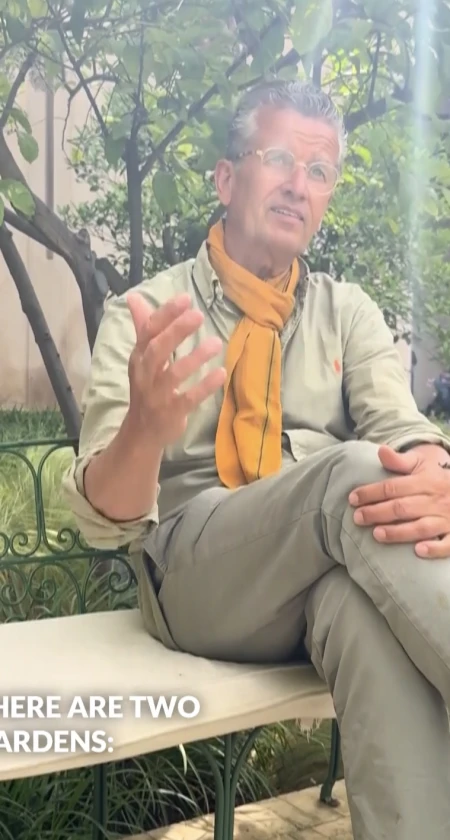
I am in Marrakech. More precisely: in the middle of the "Secret Garden." Le Jardin Secret, as it's called here – a name that still rings true today. Hidden in the heart of the old town, surrounded by the hustle and bustle of the souks, lies an oasis that breathes history while appearing surprisingly modern. A place that embodies what makes good gardens: tranquility, sensuality, layering. And water – lots of water.
The origin of this garden dates back to the 16th century, when the Saadian Sultan Moulay Abdallah had a palace complex with gardens built here. Later, as often happens, the place fell into disrepair and almost disappeared into oblivion. It took a wise investor – the Italian Lauro Milan – who had the courage – and the intuition – to revive this enchanted place. With him: my esteemed colleague Tom Stuart-Smith. Tom has accomplished something magnificent here because he possesses – in my opinion – the rare talent of combining historical depth with creative lightness.
What fascinated me particularly: The complex consists of two gardens that could hardly be more different – and therein lies their magic. On one side, there is a classical, axially symmetrical garden, strictly composed according to Islamic geometry: divided into four, with watercourses, olive and citrus trees – almost archaic in its tranquility. And on the other side: a Mediterranean homage. A lush garden inspired by the Mediterranean region, which occurs in a comparable form five times around the world – from California to South Africa.
We ourselves recently designed something similar in Mallorca. We called it "Arizona," because the climate, light conditions, and plant selection are more reminiscent of the dry-hot desert than of classic Mediterranean greenery. What unites all these gardens is their ability to create a living space that touches us despite adverse conditions. That is the true art.
In Jardin Secret, this art is particularly impressive in the water management. While water is deliberately used sparingly in the entrance area, a true masterpiece of historical water art reveals itself in the heart of the complex. The technology behind it dates back to antiquity: water is channeled from the High Atlas into huge underground cisterns and systematically fed into the garden. Without this sophisticated system, no growth would be possible. And without growth – no garden.
Tom Stuart-Smith has deeply bowed to the history of this place. He incorporated archaeological findings, uncovered old watercourses, collaborated with local nurseries, and made a plant selection that is both respectful and independent. In the Islamic garden, for example, he worked with delicate underplantings – a reference to the Persian concept of bustan, the fragrant orchard.
I am particularly touched by the attitude with which this place has been brought back to life. No trace of creative ego. No sensationalism. Instead: humility before the place. The desire to create something lasting, meaningful. A garden that is not only beautiful but also needed – as a retreat, a learning space, a meeting point.
Today, Le Jardin Secret is a cultural jewel of Marrakech. An example of how knowledge, respect, and love for nature can turn ruins back into places of longing. We need such places more than ever. Places that slow us down, inspire us, and show what is possible when tradition meets contemporary design.